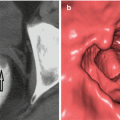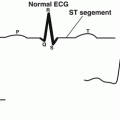ASA physical status 1
Normal healthy patient
No organic, physiologic, or psychiatric disturbance; excludes the very young and very old; healthy with good exercise tolerance
ASA physical status 2
Patients with mild systemic disease
No functional limitations; has a well-controlled disease of one-body system; controlled hypertension or diabetes without systemic effects, cigarette smoking without COPD; mild obesity, pregnancy
ASA physical status 3
Patients with severe systemic disease
Some functional limitation; has a controlled disease of >one-body system or one major system; no immediate danger of death; controlled CHF, stable angina, previous heart attack, poorly controlled hypertension, morbid obesity, chronic renal failure; bronchospastic disease with intermittent symptoms
ASA physical status 4
Patients with severe systemic disease that is a constant threat to life
Has at least one severe disease that is poorly controlled or at end stage; possible risk of death; unstable angina, symptomatic COPD, symptomatic CHF, hepatorenal failure
ASA physical status 5
Moribund patients who are not expected to survive without the operation
Not expected to survive >24 h without surgery; imminent risk of death; multiorgan failure, sepsis syndrome with hemodynamic instability, hypothermia, poorly controlled coagulopathy
ASA physical status 6
A declared brain-dead patient whose organs are being removed for donor purposes
Having analgesic, sedative and anxiolytic properties, dexmedetomidine is a new sedoanalgesic, alternative candidate to frequently used midazolam-propofol or midazolam-opioid combinations [7].
Sedation is the level of consciousness, changing from awareness to complete loss of consciousness. Sedation levels are classically classified into four levels: minimal sedation or anxiolysis, moderate sedation, deep sedation, and general anaesthesia. In minimal sedation, patients can response to verbal stimulus and there is no effect on cardiopulmonary system. In moderate sedation, response to the verbal stimuli is minimal and may necessitate light tactile stimulus. Deep sedation means there is no response to verbal or tactile stimuli, but may be a weak response to painful one. These patients need support for airway clearance and nasal oxygen must be given. General anaesthesia describes the deepest level of sedation and the patient is not responsive to painful stimuli. Another current approach is ‘conscious sedation’ or ‘monitored anaesthesia care’. It is a kind of sedation under which very painful procedures can be performed and there is not a real situation of consciousness. But, cardiopulmonary system is stable and it is a sedation level that needs monitoring and experienced staff. “The American Society of Anesthesiologists (ASA)” scale is frequently used to choose drug, dose and method of application (Table 2.1). A moderate sedation and analgesia are enough to perform most of the painful procedures according to ASA. But, this spectrum may vary from minimal to deep sedation depending on condition of patient, conditions for monitoring and experience of staff. Gas insufflation in colonoscopy may cause both pain and perforation. Deep sedation both relaxes intestinal wall and provides patient comfort [8–10].
Widely Used Sedatives/Analgesics
Benzodiazepines and opioids are the most frequently used sedative/analgesics. As the most frequently used benzodiazepine, midazolam is generally used alone or combined with propofol. It is a good sedative with antegrade and retrograde amnesic, anxiolytic, hypnotic and centrally acting muscle relaxing effects. It acts on GABA-A receptors and increases the affinity of receptor affinity for GABA, thus potentiating GABAergic neurotransmission. Shortly after IM or IV injection, anxiolytic and sedating effects are seen. Its mean affectivity period is 30 min and midazolam is metabolized completely in liver and its metabolites are excreted in urine. It is transported by albumin in plasma. Its effects may be exacerbated even in smaller doses in aged and debilitated patients due to hypoalbunemia. Also, in sedative doses, it inhibits ventilator response to hypoxia and may cause hypoxemia, hypoventilation, airway obstruction, apnoea, arrhythmia, hypotension and vasovagal reactions. The side effects may occur more easily in patients with COPD. Thus, it is more proper to use the drug in titrated doses or change to another drug in this group of patients. Midazolam-opioid combinations are mostly used for their sedating effect, but sedative and hypnotic effects may show synergistic action. The complications in GI practice are not because of the procedure, but due to these drug combination (Table 2.2) [11–13].
Table 2.2
Pharmacological profiles of the drugs used in endoscopic sedation
Drug | Onset of action, min | Peak effect, min | Duration of effect, min | Endoscopic sedative dosea minimum–maximum dose | FDA pregnancy category | Antagonist | Side effects | |
|---|---|---|---|---|---|---|---|---|
Droperidol (mg) | 3–10 | 30 | 120–240 | 1.25–2.5 | 10 | C | N/A | Prolonged QT interval, ventricular arrhythmia, extrapyramidal |
Fentanyl (μg) | 1–2 | 3–5 | 30–60 | 50–100 | 200 | C | Naloxone | Respiratory depression, vomiting |
Flumazenil (mg) | 1–2 | 3 | 60 | 0.1–0.3 | >5 | C | Agitation, withdrawal symptoms | |
Ketamine (mg) | <1 | 1 | 10–15 | 0.5/kg | B | N/A | Emergence reactionb, apnoea, laryngospasm | |
Meperidine (mg) | 3–6 | 5–7 | 60–180 | 25–50 | 150 | C | Naloxone | Respiratory depression, pruritus, vomiting, interaction with MAO |
Midazolam (mg) | 1–2 | 3–4 | 15–80 | 1–2 | 6 | D | Flumazenil | Respiratory depression, disinhibition |
Naloxone (mg) | 1–2 | 5 | 30–45 | 0.2–0.4 | >2 | B | Narcotic withdrawal | |
Nitrous oxide | 2–3 | Dose depended | 15–30 | Titrate to effect | C | N/A | Respiratory depression, headache | |
Propofol (mg) | <1 | 1–2 | 4–8 | 10–40 | 400 | B | N/A | Respiratory depression, cardiovascular instability |
Dexemedetomidine (μg) | <1 | 1–2 | 1 | 10 | C | N/A | Bradycardia, hypotension | |
One of the sedative agents, getting popular recently, is propofol. Respiratory depressing effect in its sedative doses necessitates experienced personnel in airway maintenance. In combined forms, it is very useful for moderate sedation, but it can result in deep sedation if used as a single agent. Depending on dose, it has a wide spectrum of side effects, varying from sedation and anxiolysis to CNS depression, hypnosis, hypotension and respiratory depression. Myocardial ischemia may occur due to respiratory depression and hypotension. Again, exacerbated responses may be seen in hypoalbunemic aged and debilitated patients. But, these side effects can be lessened by titrating dose and administration by experienced staff. Propofol combination with opioids shows synergistic action. Nevertheless, rapid redistribution and rapid clearance are important advantages. 2–3 mg/kg of propofol is enough for minimal sedation; it depresses cough reflex and permits a colonoscopic procedure of 10–15 min. But, if procedure lengthens or level of sedation gets deeper, aspiration risk, hypotension and cardiovascular depression may occur. Experienced staff is again necessary for patients’ safety. Immobilization and pain non-sensation are very important to perform a colonoscopic procedure; this necessitates moderate or deep sedation most of the times [9, 11–17].
Dexmedetomidine
Having more central and less peripheral sympatholytic effects and being sedative, anxiolytic and analgesic via imidazole receptors, it is a good candidate to use in GI practice. Sympatholytic effect results in a balanced hypotension and slight bradycardia by depressing noradrenaline secretion. Acting on alpha 2 receptors, it is a more centrally acting drug. Most of it (>90 %) is transported coupled to albumin in plasma and metabolized by glucuronidation in liver and excreted by kidneys mainly and via biliary tract in a lesser amount. It has a distribution half-life of 4–6 min and elimination half-life of 2 h. Preventing reflex tachycardia and making balanced hypotension, and having analgesic and sedative effects altogether, it decreases infarction risk in elderly patients by decreasing oxygen demand of myocardium. But, it must be administered by IV infusion because of its short distribution half-life.
During sedoanelgesia, the aimed sedation level may exceed and progress to deeper sedation, even general anaesthesia and respiratory and cardiac depression may occur. Thus, modified Aldrete sedation scoring is useful to evaluate level of sedation during and after the procedure (Table 2.3). The patient can be discharged if has an Aldrete score of 9 or more.
Table 2.3
Aldrete scoring (modified)
Modified aldrete score | 2 | 1 | 0 |
|---|---|---|---|
Respiration | Able to breathe deeply and cough freely | Dyspnoea or limited breathing | Apnoeic |
O2 Saturation | SpO2 > 92 % on room air | Needs O2 supplementation to maintain SpO2 > 90 | SpO2 < 90 % on O2 support |
Consciousness | Fully awake | Arousable on calling | No response |
Circulation | B/P ± 20 % of preanesthetic level | B/P ± 20–50 % of preanesthetic level | B/P ± 50 % of preanesthetic level |
Activity | Able to move 4 extremities voluntarily or on command | Able to move 2 extremities voluntarily or on command | Able to move 0 extremities voluntarily or on command |
The preferred sedoanelgesic drug depends on experience of anaesthesiologist, medical history and physical condition (ASA score) of patient and type of procedure planned. Anaesthesiologist should choose sedation technique, drugs and their way of application individually according to health status of the patient and procedure. Therefore, pharmacologic properties and application way of each drug are not mentioned here (Table 2.2). It is clear that combining a sedative drug with an opioid one results in moderate to deep sedation. But, it must be remembered that drug combinations may cause severe side effects, respiratory depression and hypoxemia. Oxygenation of the patient during moderate and deep sedation reduces these risks.
Stay updated, free articles. Join our Telegram channel

Full access? Get Clinical Tree





